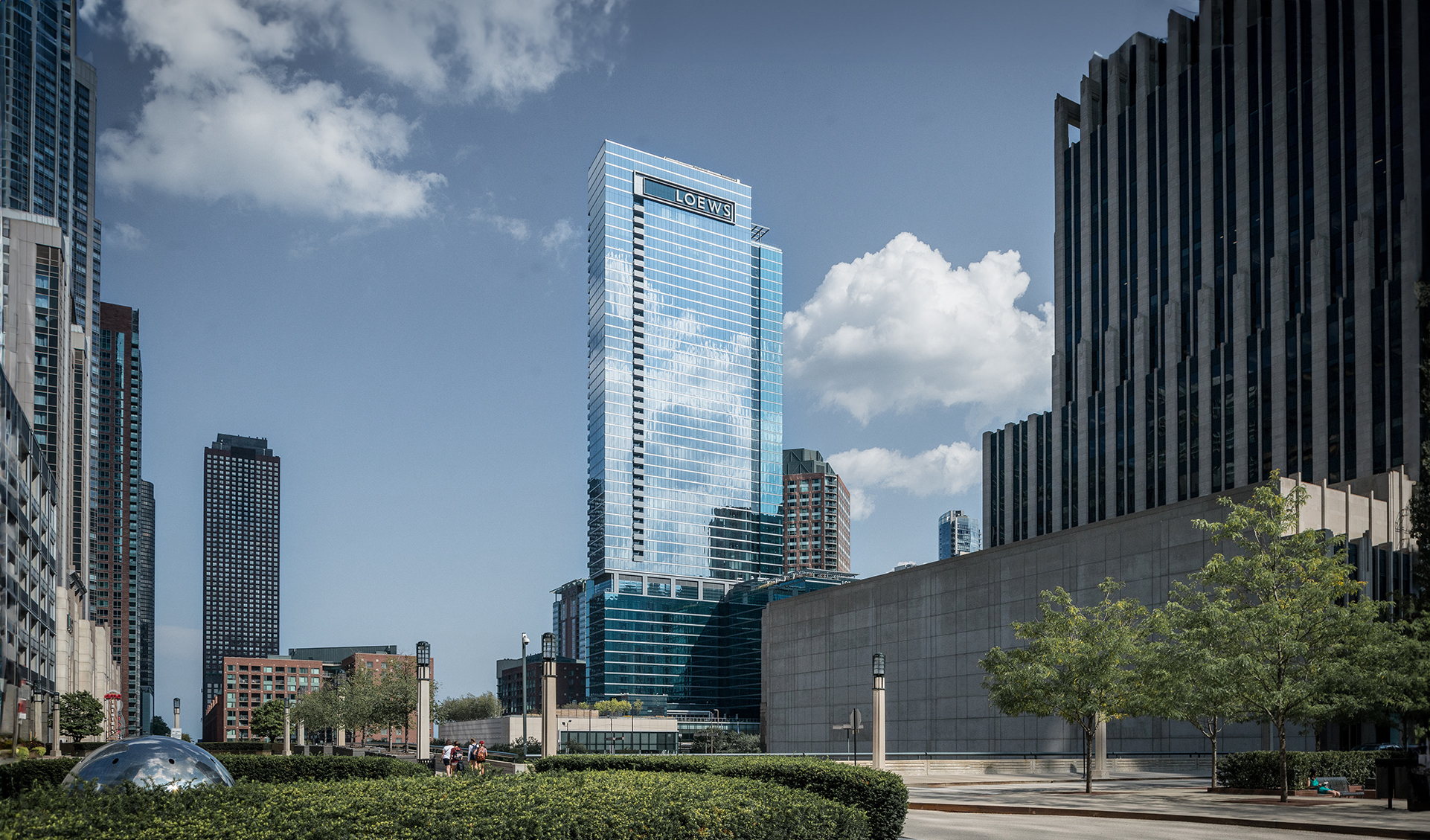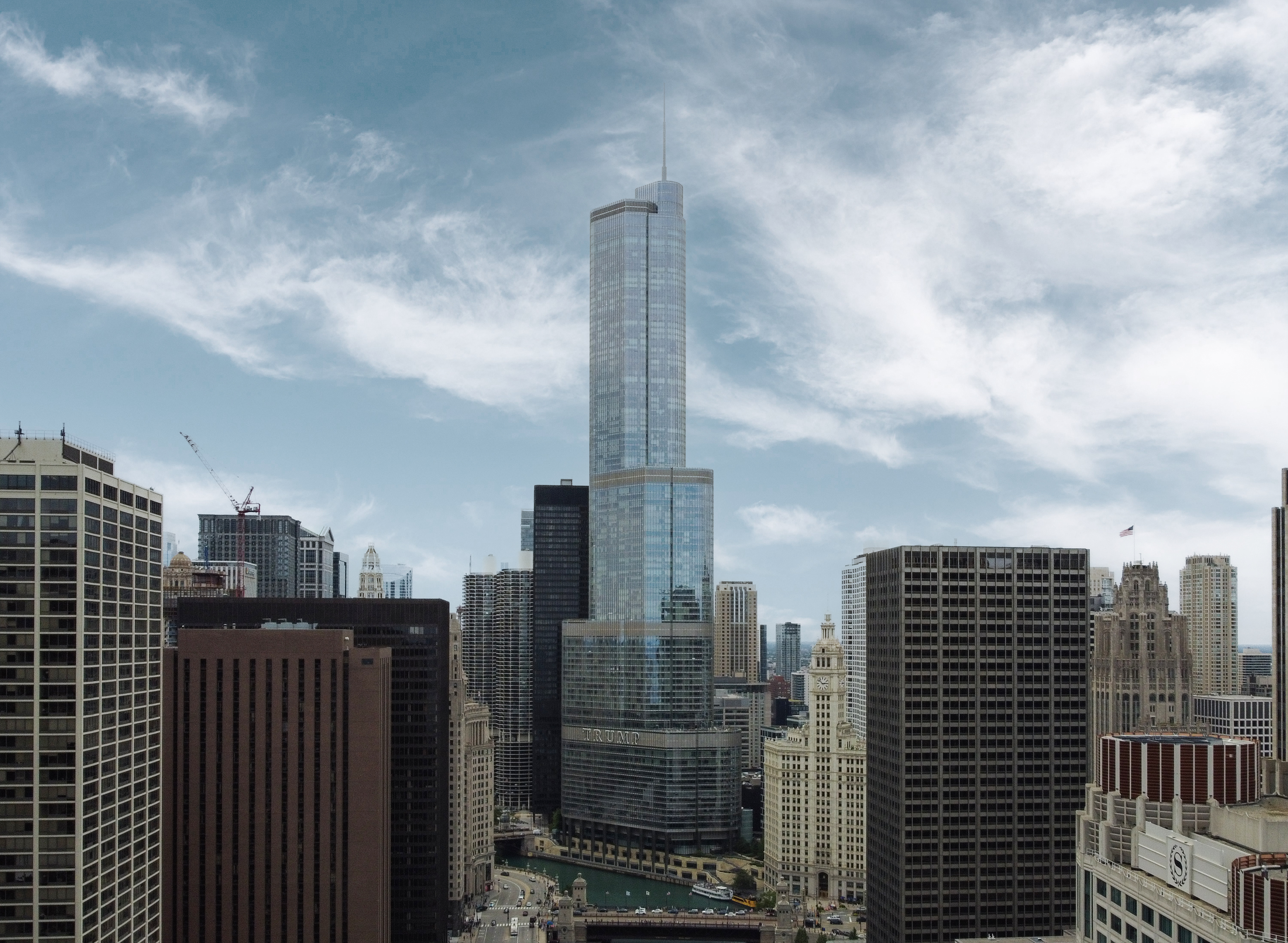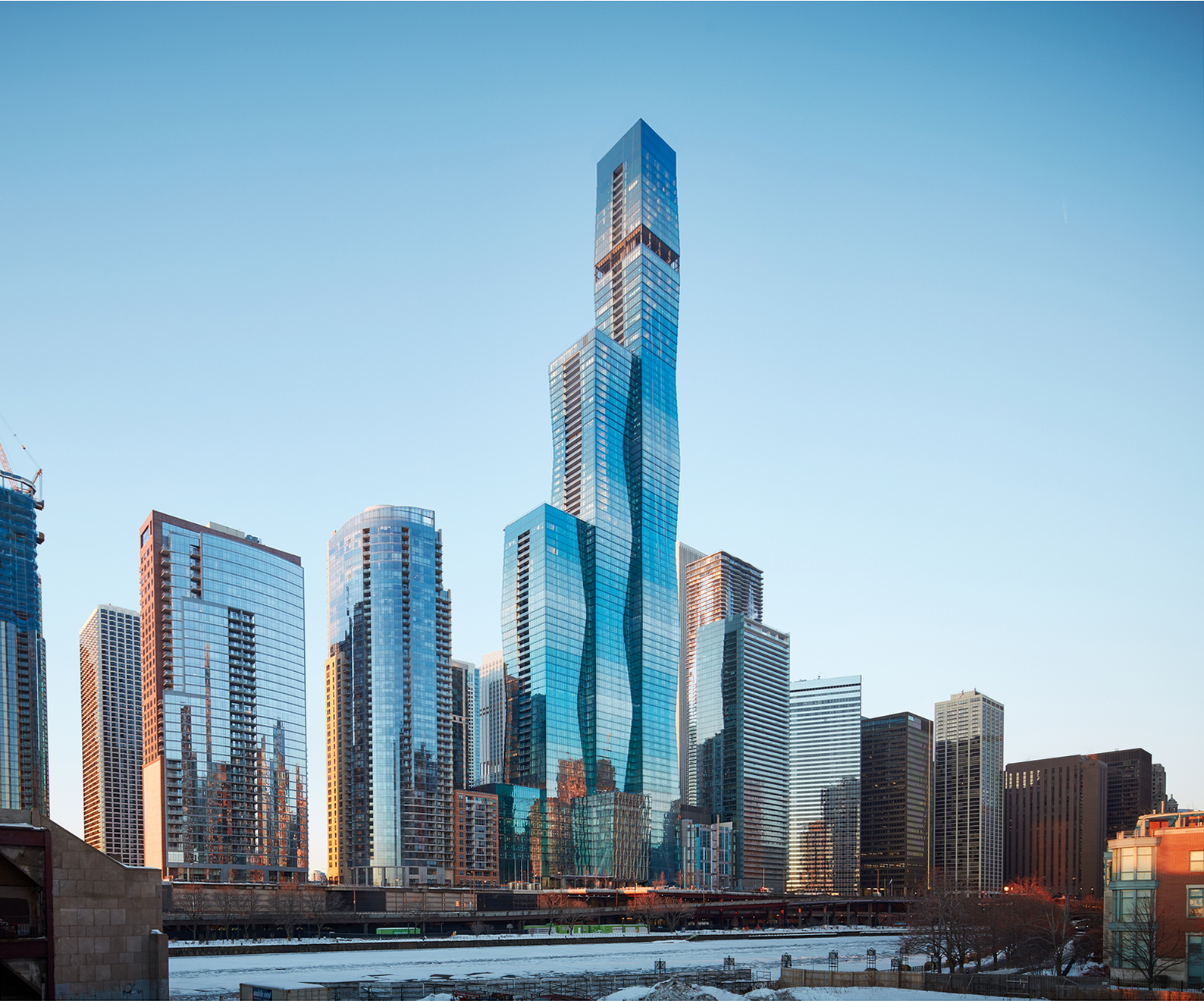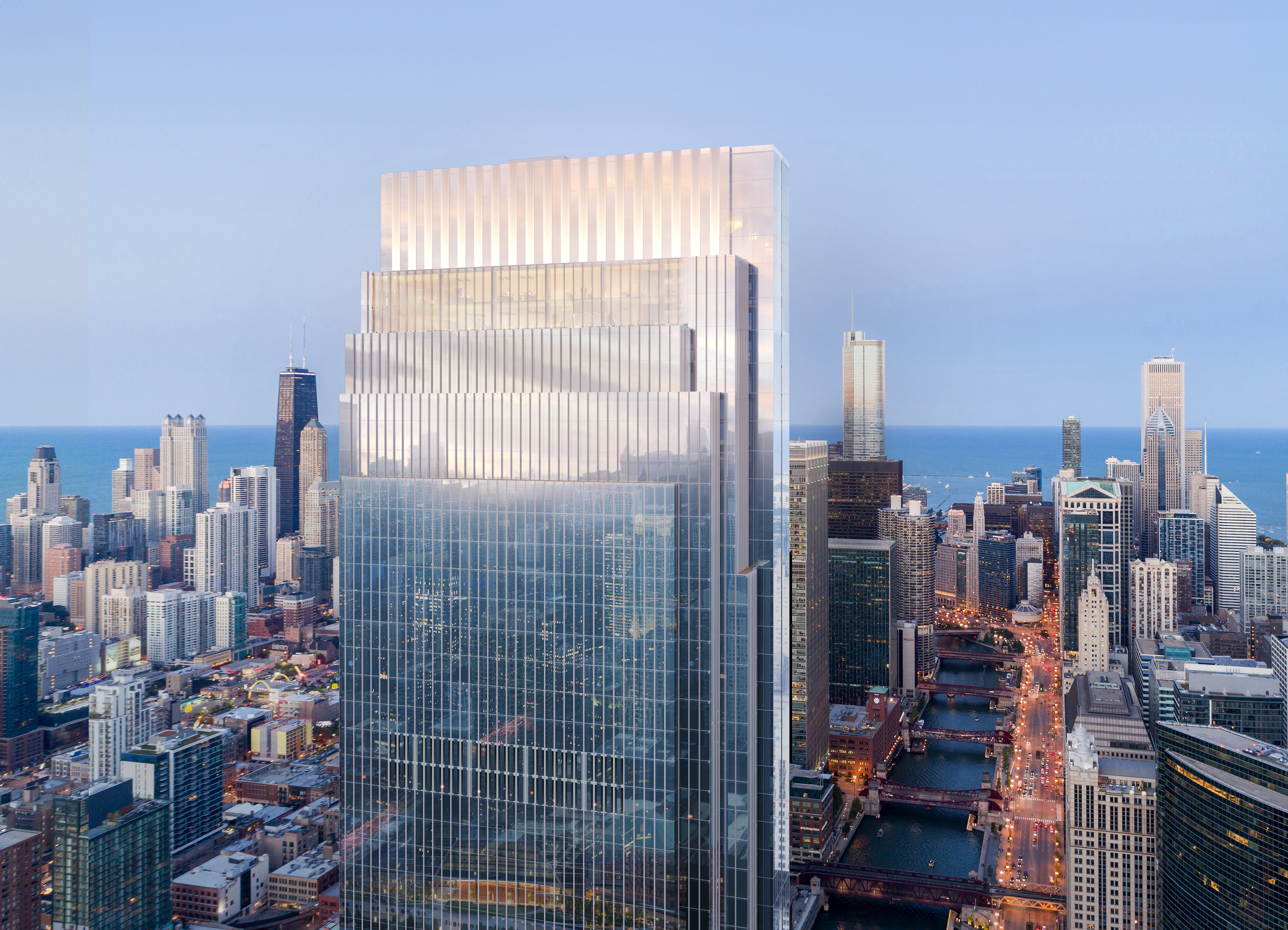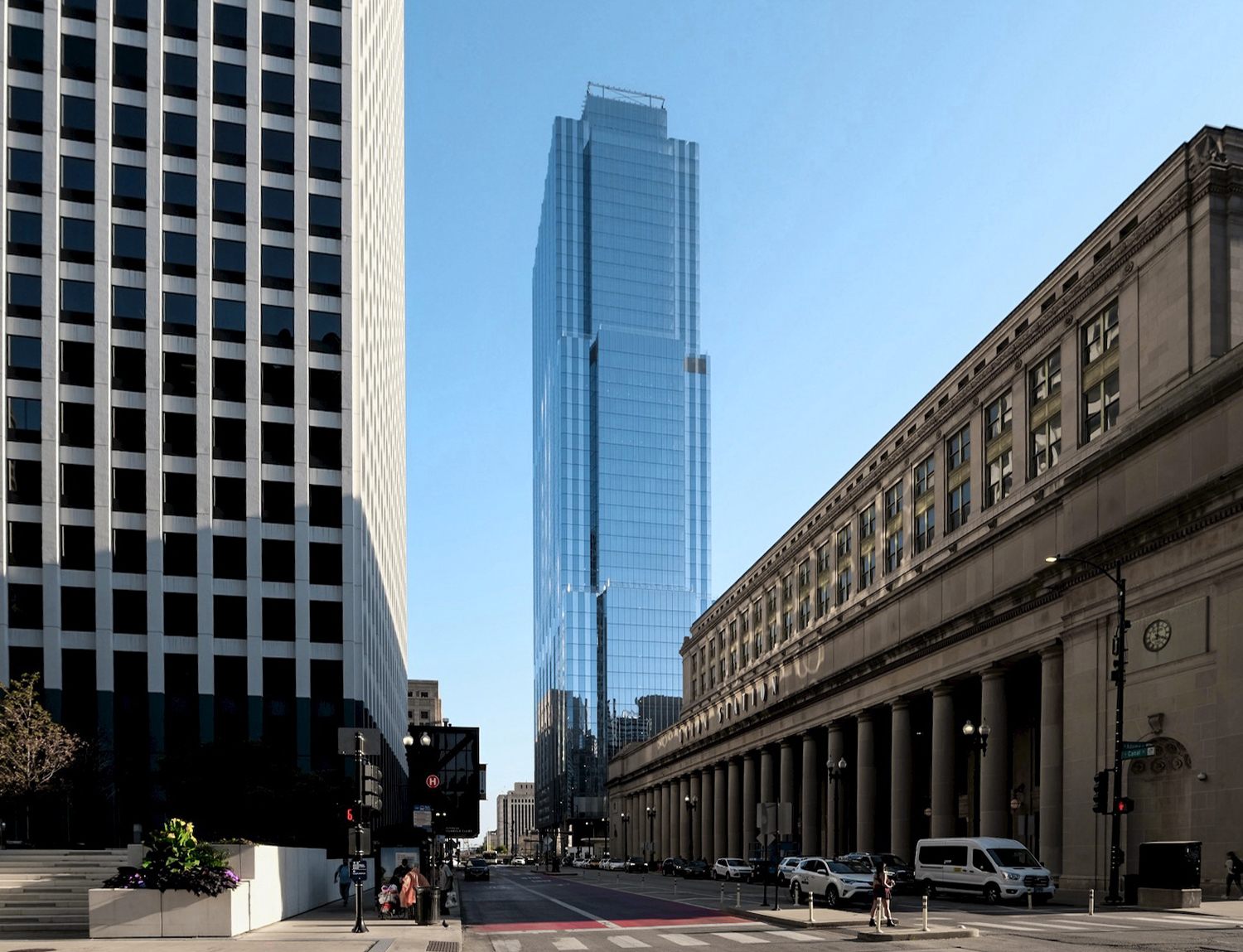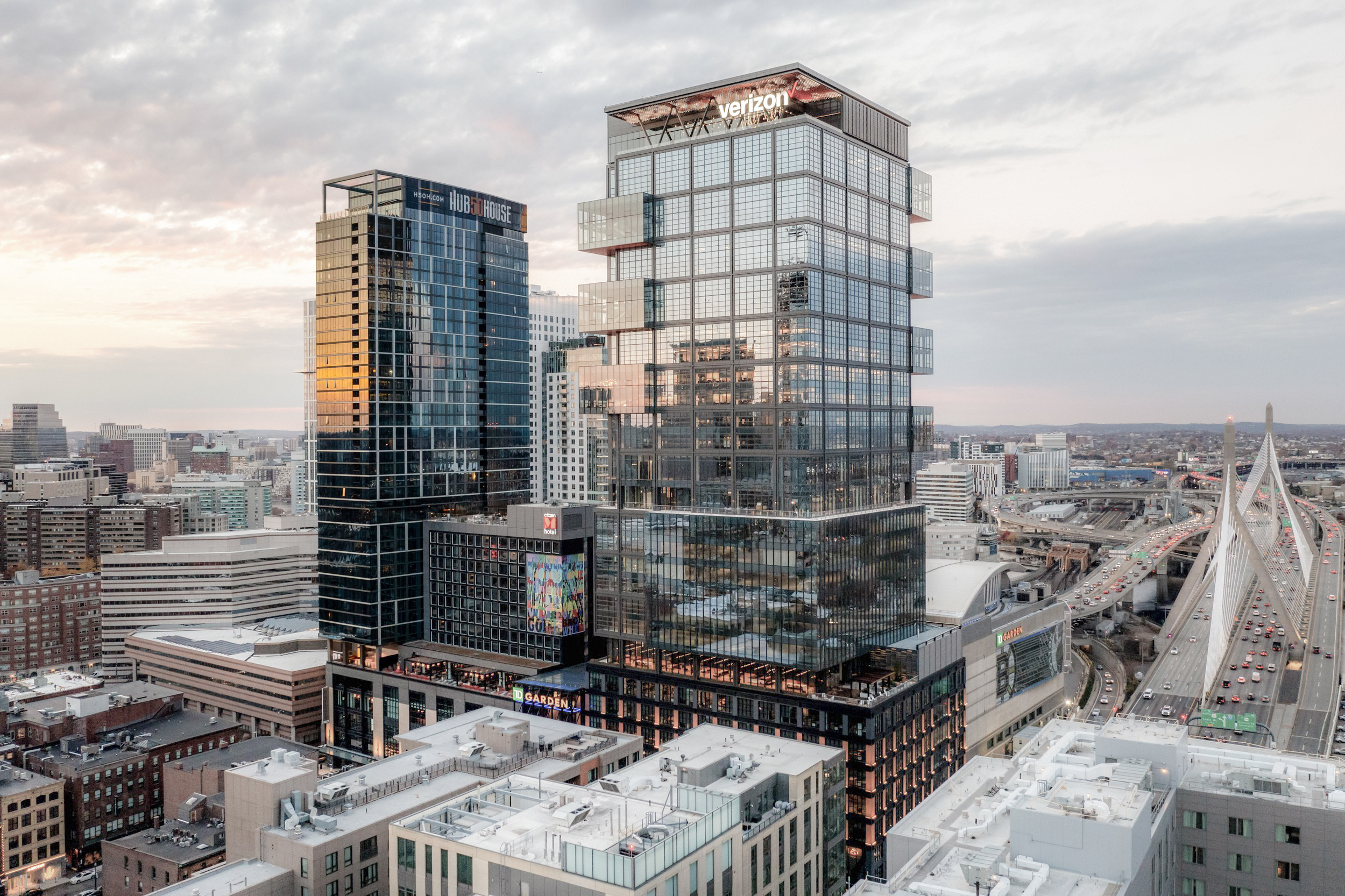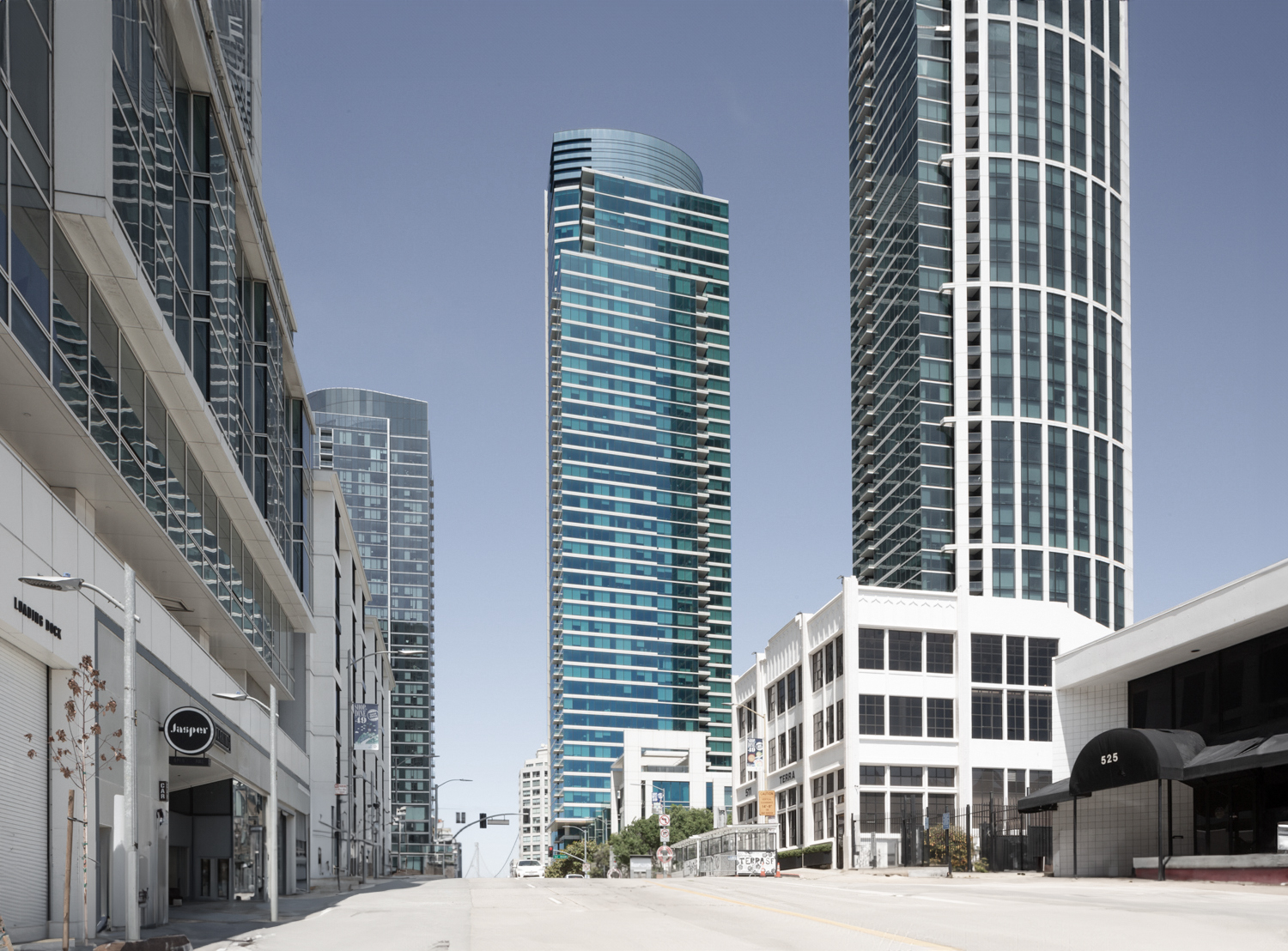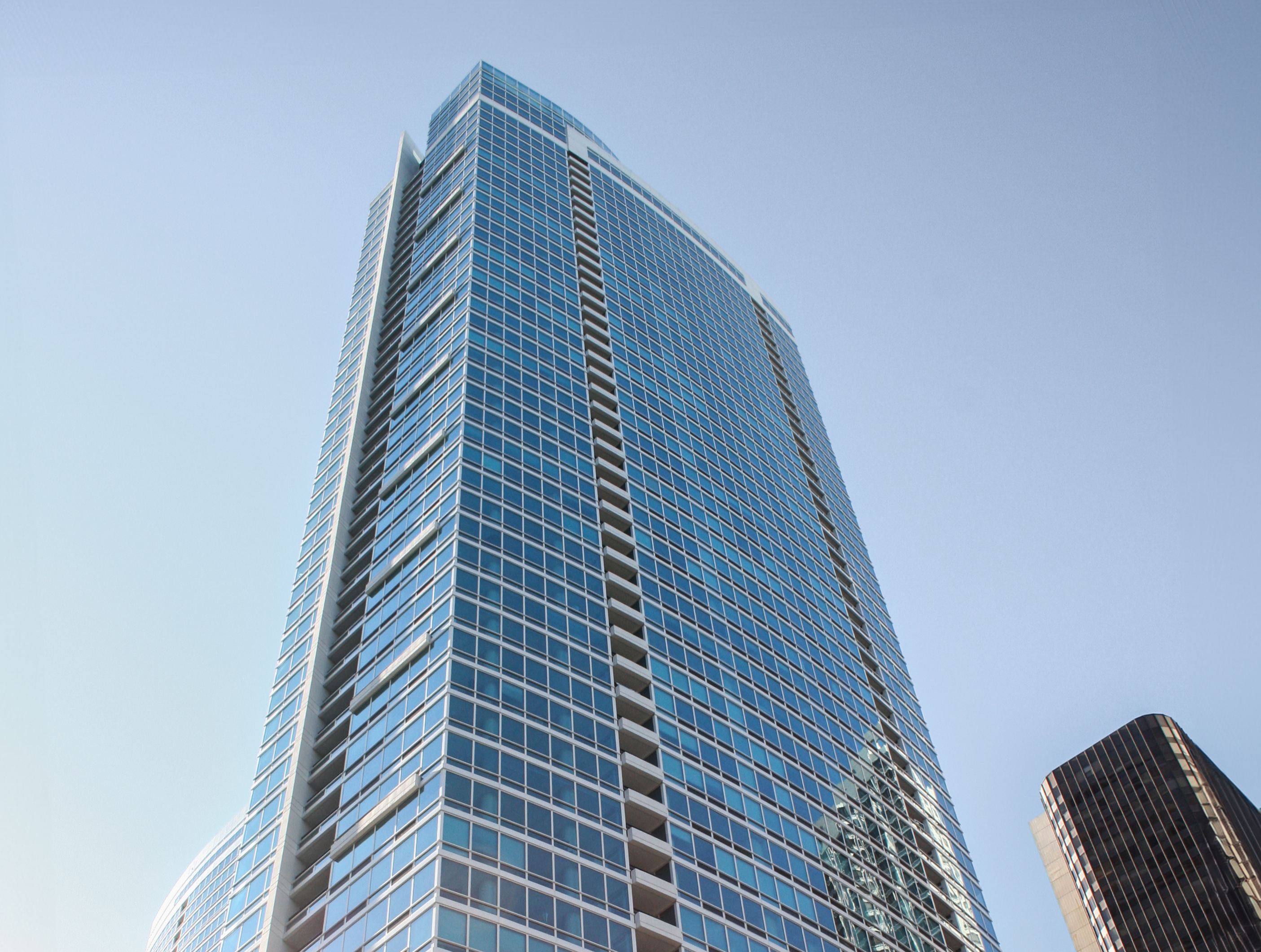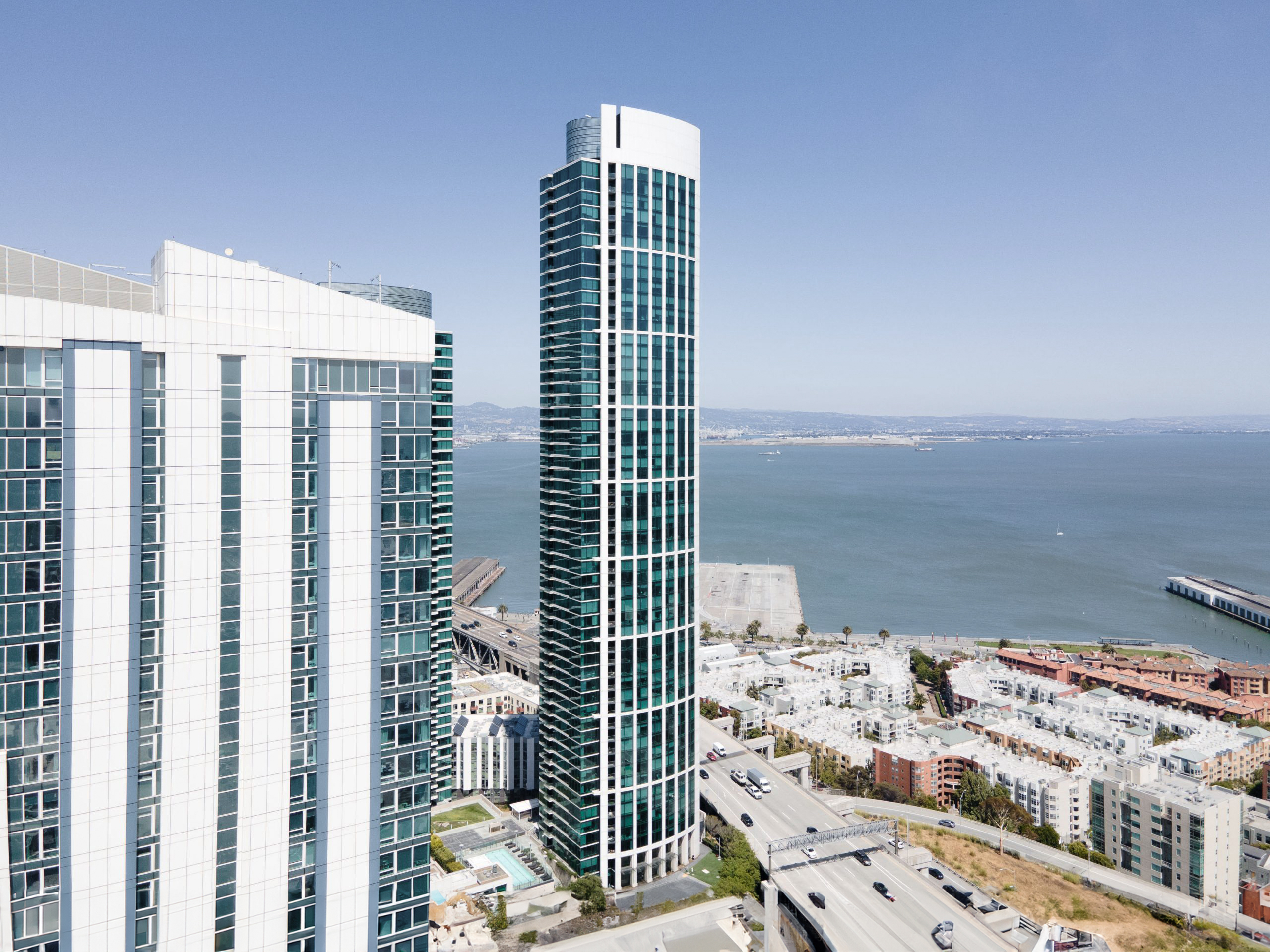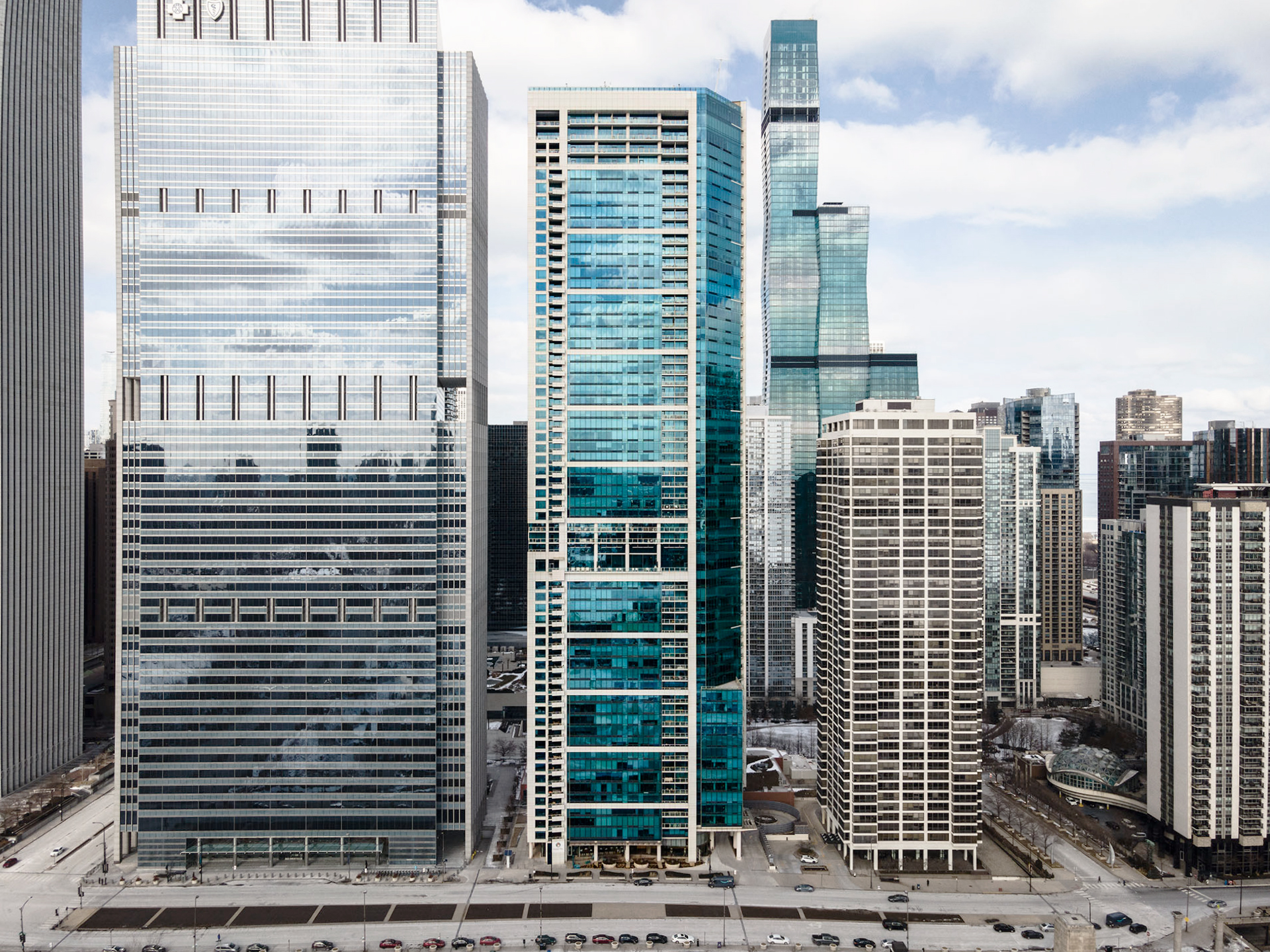The Loews Hotel Tower is a Contemporary skyscraper designed in 2007 by Solomon Cordwell Buenz, and built between 2012 and 2015, for a reported $200 million dollars, in Chicago, IL.
Loews Hotel Tower is not the only name you might know this building by though. The building is, or has also been known as Loews North Park Drive.
Its precise street address is 455 North Park Drive, Chicago, IL. You can also find it on the map here.
